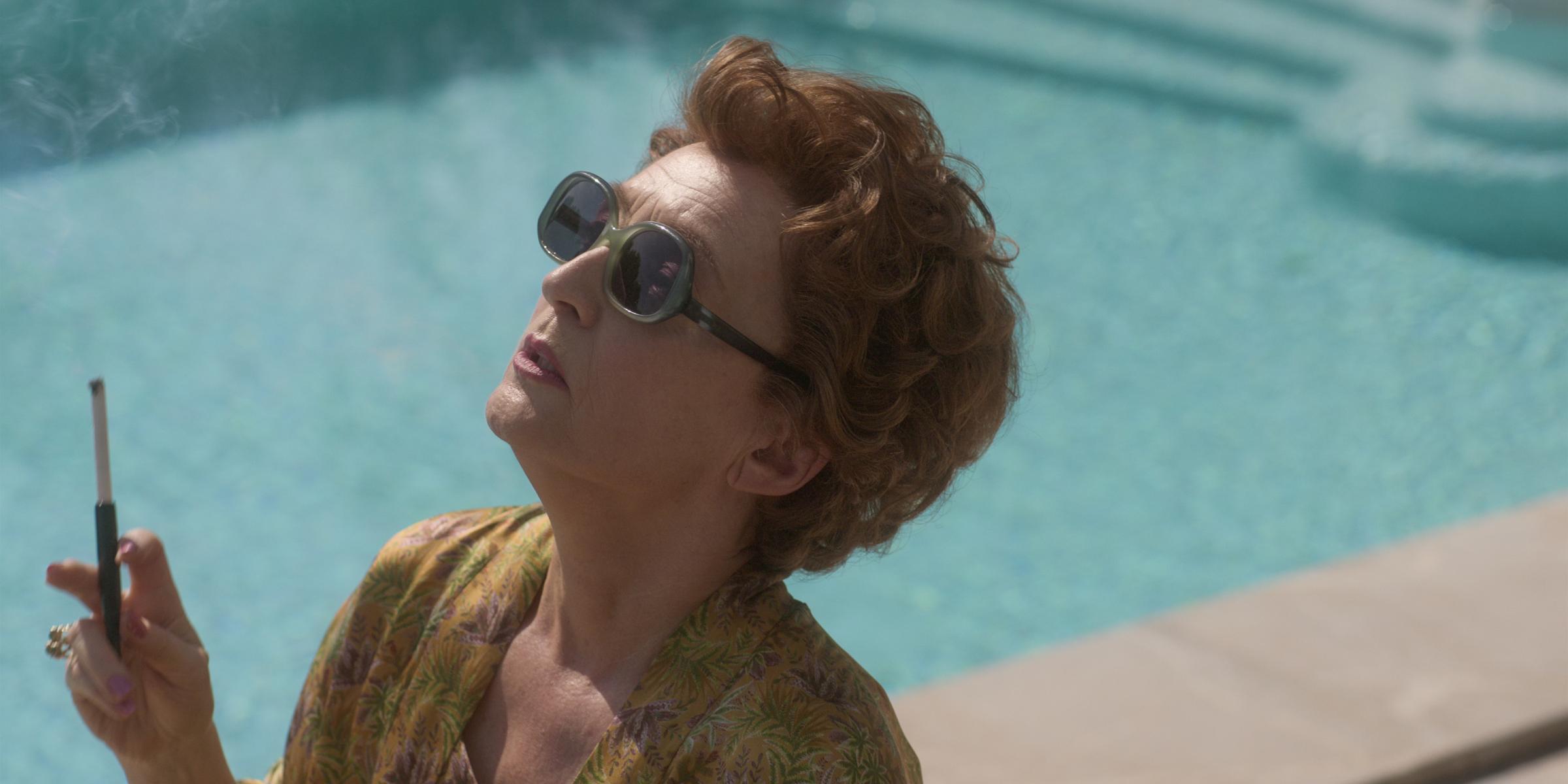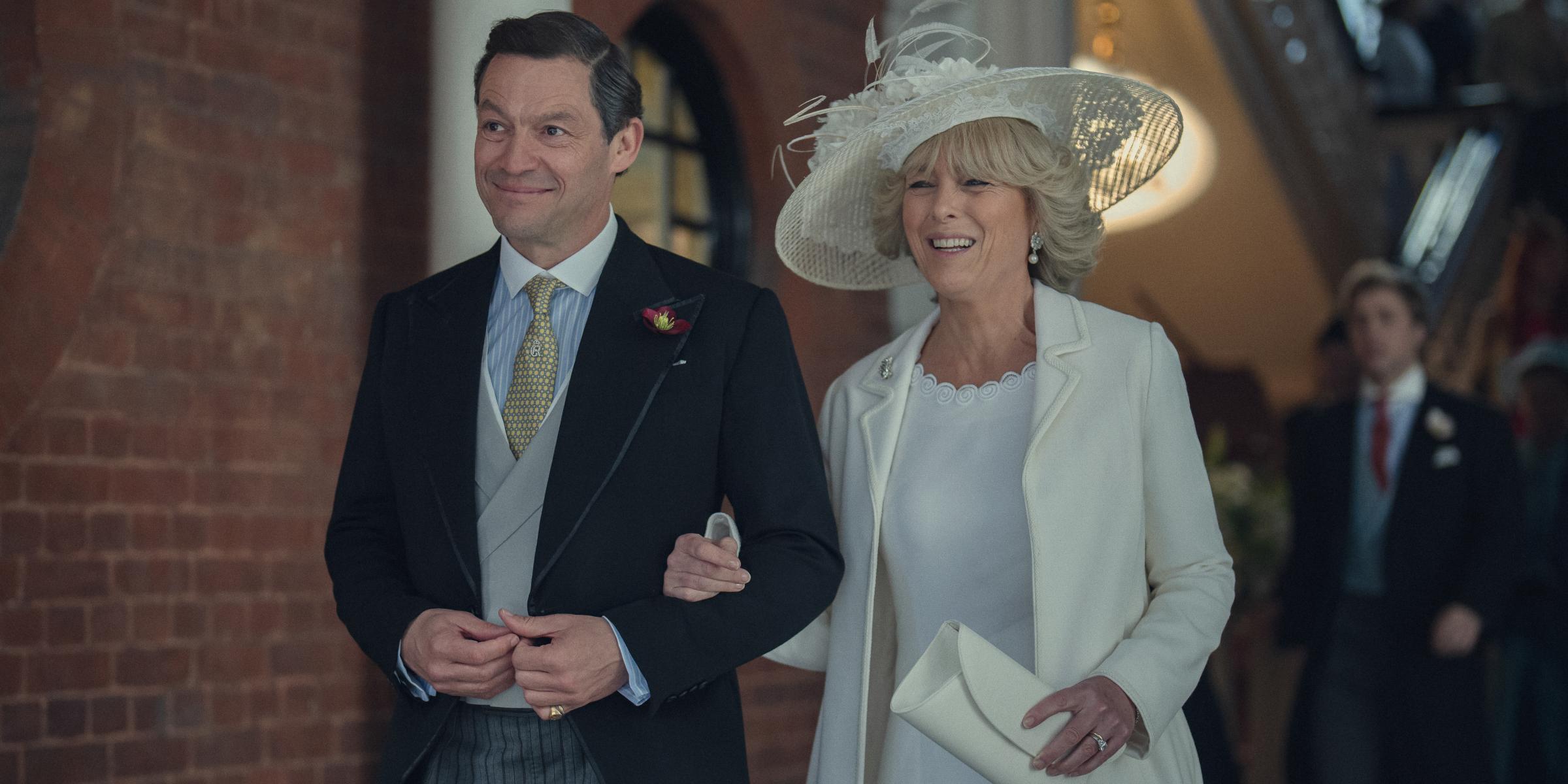Spoiler alert: This article discusses details of The Crown Season 6, Part 2.
Every season of The Crown has at least one—the episode where the royal family wrings its hands over the future of the British monarchy. Sometimes the catalyst is public backlash to their profligacy. Other times it’s the media’s impatience with the stodginess of an institution that seems more antiquated with each passing year. While such complaints are given some credence on the show, the solution that supposedly redeems the institution tends to be superficial. A vocal critic is brought to heel. A handful of commoners are invited to a glamorous event in the palace. A documentary is commissioned to humanize the House of Windsor.
In the second part of the series’ sixth and final season, that episode is titled “Ruritania.” It’s 1999, and Prime Minister Tony Blair (Bertie Carvel) is enjoying the kind of approval ratings that would make any recent occupant of the White House weep. Queen Elizabeth (Imelda Staunton) has a nightmare in which she’s wandering smoky, chaotic streets as Blair is crowned King—and wakes up resolved to enlist his help in improving the image of a monarchy that’s been especially unpopular since Princess Diana’s death. Though he’s uncomfortable with the assignment, the PM has his team write up some sensible recommendations: Be more transparent. Let royals marry Catholics. Make do with less staff; what even is a “Lord High Admiral of the Wash”? The proposal offends Elizabeth. Ultimately, she decides that (like, ironically, the Catholic Church) the family should maintain its arcane mystique: “This is our duty: to lift people up and transport them to another realm—not bring them down to Earth and remind them of what they already have.”

The second of six episodes that arrived Thursday on Netflix, “Ruritania” sets the tone for a pensive, if uneven, closing arc that touches on The Crown’s most obvious question—who is Elizabeth really?—but seems more invested in exploring whether the British monarchy can possibly escape irrelevance in the 21st century. The answer we’re left with, as Staunton’s Elizabeth marches toward a bright light behind an open cathedral door in the series’ portentous final shot, is a resounding no. In fact, whether or not the team behind it acknowledges as much, the show has always functioned as a robust argument for the end of the institution at its center.
Creator Peter Morgan, who has written or co-written all 60 episodes, is hardly a radical. “I probably am a monarchist, but out of appreciation for what they do when they do it well,” he recently told Variety, echoing other statements he’s made about his allegiance over the years. Yet in the same paragraph he admits: “I think if we’re all adults, we would say that the system makes no sense and is unjust in the modern democracy.” In other words, Morgan appreciates the monarchy on a sentimental and, judging by the show’s sumptuous production design, aesthetic level, even as he understands that it is a fundamentally irrational institution.

His sympathy for the royal family, as people, has been evident throughout the series. Claire Foy’s young queen, thrust onto the throne at 25 after the death of her beloved father and pressured by the Firm into making decisions that drove wedges between Elizabeth and the people she loved most, was particularly compelling. We’ve also met three generations of “spares” who languish in the shadow of an endlessly scrutinized heir. (Princess Margaret gets a fond send-off in this season’s best episode, built around Lesley Manville’s stunning performance as a septuagenarian party girl undone by a series of strokes.) The fact that Mohamed al-Fayed, played by Salim Daw, emerges as a bigger threat to the royal legacy in later seasons than Prince Andrew says a lot about how far Morgan is willing to go in vilifying individual Windsors.
By the middle of the first season, when Foy’s Elizabeth yields to her elders’ insistence that Margaret (Vanessa Kirby) be prohibited from marrying the divorced love of her life, Peter Towsend (Ben Miles), the series has revealed its central insight: The Crown may refer to a person as well as an institution, but it’s impossible to be both at the same time. You have to choose. Over and over, we watched Elizabeth put her responsibilities before her humanity, and that of her relatives, ostensibly in order to protect the royal family’s role in British society. Which explains why The Crown had become repetitive even before it traded Foy’s cast for Olivia Colman’s.
Morgan has made viewers of all political orientations feel compassion toward the repressed royals, even if we also disdain their insularity and selfishness—which, to his credit, he also depicted in episodes like Season 4 standout “The Balmoral Test.” Yet he’s never really made a convincing case that the pain they endured, willingly or not, to keep the monarchy afloat yielded anything of value for their subjects. Yes, some of their ploys to court the public succeeded. But to what end? If Britons loved Blair more than they loved Elizabeth, why was that a problem for anyone outside the palace walls? The implication of a later scene, in which angry citizens protest Blair’s support of the Iraq War, is that the sovereign, immune to the vicissitudes of politics, can provide a greater sense of stability than a PM. But when it’s premised on power that is purely symbolic, how can that image of stability be anything more than a comforting illusion?

As Season 6 progresses, teenage Prince William (Ed McVey, cannily splitting the difference between the real Wills and a young Brad Pitt) gets sucked into the maelstrom of fame, despite wanting nothing to do with a media machine he blamed for his mother’s death. And Morgan returns to a hypothetical scenario he’s entertained in past seasons: What if Elizabeth had abdicated years, or decades, before she finally passed away at 96, and allowed a younger Charles to become King? The creator has said that he has “enormous sympathy” for Charles, and he proved it in a fifth season that not only showcased his reformist views, but also, at one point, featured a lengthy tribute to the charitable work he pursued in lieu of the throne.
The Crown ends, anticlimactically, with Elizabeth permitting her divorced son (Dominic West) to marry the divorced love of his life, Camilla Parker Bowles (Olivia Williams)—a decision she frames as not hypocritical, in light of what she put Margaret through a half-century earlier, or even progressive but pragmatic. A King can’t “live in sin.” She is, you see, truly poised to cede the throne to him. Colman returns to urge her exhausted elderly self to retire. But Foy’s dutiful Elizabeth, making her own cameo, wins out. “This system is a dreadful thing to inflict on people,” she tells Staunton. “But you seem to thrive in it. And, more importantly, it seems to thrive under you.”

Morgan revised the final season after the real Queen’s death and funeral, so maybe these lines are more generous than what he might have otherwise written. Then again, maybe we’re supposed to read the imaginary young Elizabeth as delusional. After all, episodes like “Ruritania” and the many instances in which Diana (Elizabeth Debicki) outmaneuvers the Firm in the court of public opinion, suggested the monarchy was not, in fact, thriving under her during the last decades of her reign. Never mind that the show wraps up in 2005, liberating Morgan from the need to address Harry and Meghan’s accusations of racism, among other horrors, within the royal family and limiting his obligation to either condemn or apologize for Andrew.
It’s hard to believe that so many contemporary scandals would have unfolded that much differently had Charles become King in his 50s. But in the series’ final moments, Morgan frames Elizabeth’s decision to persist, dooming the UK to decades of one geriatric monarch or another, as a cause for grief. Now empty except for the Queen, Charles and Camilla’s wedding venue, St. George’s Chapel, takes on a funereal air. “Sleep, Dearie, Sleep”—the bagpipe lament that her piper would play 17 years later, as she was laid to rest, which gives the finale its title—blares. And The Crown becomes a requiem for the British monarchy. It’s a lovely scene. But it might have made a more effective farewell to a show, a woman, and the institution she represented if Morgan had ever articulated why, exactly, we were supposed to be mourning.
More Must-Reads from TIME
- Caitlin Clark Is TIME's 2024 Athlete of the Year
- Where Trump 2.0 Will Differ From 1.0
- Is Intermittent Fasting Good or Bad for You?
- The 100 Must-Read Books of 2024
- Column: If Optimism Feels Ridiculous Now, Try Hope
- The Future of Climate Action Is Trade Policy
- FX’s Say Nothing Is the Must-Watch Political Thriller of 2024
- Merle Bombardieri Is Helping People Make the Baby Decision
Contact us at letters@time.com